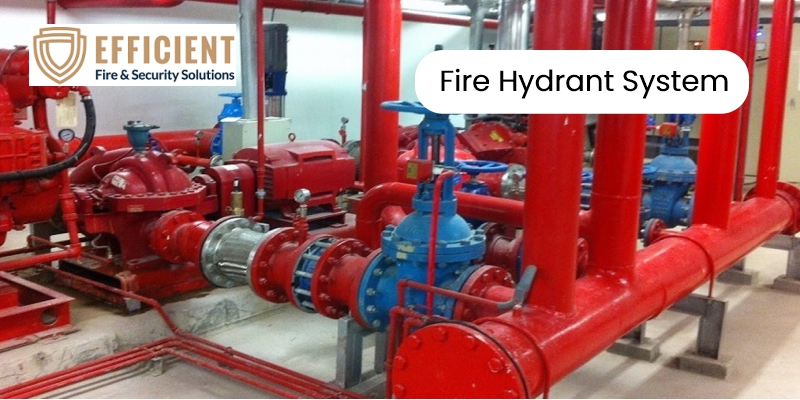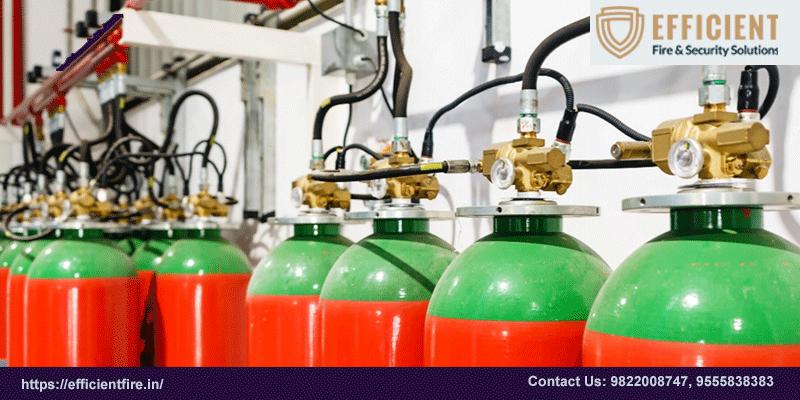A Fire hydrant system is generally part of a more elaborate fire protection system also known as the backbone of the firefighting system, which is installed at a particular building based on its size and height. The function of the fire hydrant system is to supply water via a hose pipe which is attached to the hydrant at the time of firefighting. The fire hydrants which are commonly used in India are a single body casted product.
This allows for there to be minimum chances of leakages and negligible pressure drop during the firefighting process. Efficient Fire & Security Solution Private Limited is one of the leading manufacturers, suppliers, and service providers of Fire Fighting equipment and fire protection equipment in Pune, India.
Generally, fire hydrants are provided on each level of the building so water can be sprayed into different areas of that floor by using the hoses. Also, hydrants are provided along the boundary walls of buildings to be used for dousing the fire externally in case there is a large fire within the building. This allows for the fireman to be at a safe distance from the building while being able to yet fight the fire.
Design and Components:
Fire hydrant systems typically comprise several key components, each playing a vital role in delivering water to firefighters. The main components include:
Hydrant: The hydrant itself is the visible above-ground component consisting of a metal or plastic post with one or more outlet valves. Hydrants are typically painted in distinctive colours to signify their flow rate and pressure capacity.
Couplings and Fittings: Couplings and fittings connect hoses to the hydrant, allowing firefighters to access the water supply easily. These components are designed for quick attachment and detachment during emergency situations.
Function:
Fire hydrant systems function as crucial resources for firefighting operations. When a fire occurs, firefighters connect hoses to nearby hydrants to access water rapidly. The hydrant valves are opened, allowing pressurized water from the municipal supply to flow through the underground piping and out through the hydrant outlet valves. Firefighters can then use this water to extinguish fires or control their spread.
Importance:
The importance of fire hydrant systems cannot be overstated, as they play a fundamental role in urban fire protection and public safety. Key reasons for their importance include:
Rapid Response: Fire hydrant systems enable firefighters to respond quickly to fire emergencies, minimizing property damage and potential loss of life.
Reliability: Properly maintained fire hydrant systems provide a reliable and consistent water supply, crucial for effective firefighting operations.
Accessibility: Hydrants are strategically placed throughout urban areas, ensuring widespread accessibility for firefighting vehicles and personnel.
Conclusion:
In conclusion, fire hydrant system are indispensable components of urban infrastructure, providing firefighters with essential water resources for combating fires effectively. Understanding the design, function, and importance of these systems is crucial for ensuring their proper maintenance and maximizing their effectiveness in safeguarding public safety and property. Continued investment in the maintenance and expansion of fire hydrant systems is essential for building resilient and fire-safe communities.





